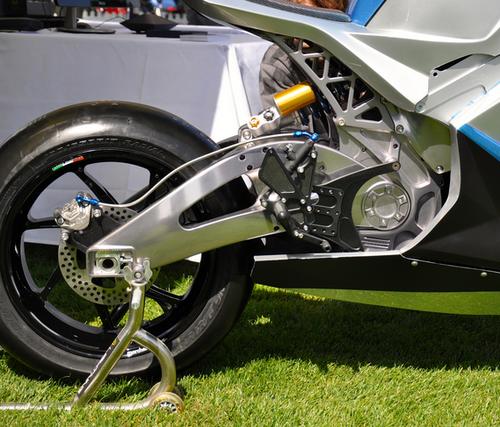April 8, 2015

As additive manufacturing, or 3D printing, becomes more and more sophisticated and capable of direct production in some applications, a class of software is emerging that exploits the capability of AM technology to produce objects in a highly freeform manner.
Engineering and manufacturing software giant Autodesk refers to this emerging model as goal-directed design (GDD). Autodesk is building a GDD CAD system called Dreamcatcher, now under development at its research lab while deployed in beta form to a number of the firm's customers.

London-based consulting and software firm Within Labsmarkets a commercialized GDD optimization software product called Within Enhance. The firm has developed tools and design processes that generate latticed structures with variable-density surfaces, employing what it calls "bio-inspired artificial intelligence." (Autodesk has acquired Within Labs, though the latter continues to sell its software and services.)
Rather than defining a part in great detail from the top down, in bio-inspired computer-aided design, the user gives the software a set of fundamental rules and lets it seek out the optimal solution to a problem. Autodesk's GDD system turns CAD on its head in a similar way; as opposed to a starting point of inputting the desired geometry, Dreamcatcher's bio-inspired algorithms generate the optimal design solution, employing whatever geometry solves the problem.
To understand the goal-directed connection to biological systems, take the example of a tree. A tree's internal programming drives it to grow in a direction and shape that maximize its exposure to light. That cell-based light-seeking program is what determines the shape of the trunk and positioning of the branches as well as the array of the leaves.
MORE FROM DESIGN NEWS: It's Time to Throw Out What You Know About 3D Printing
Speaking with Design News, Diego Tamburini, who leads manufacturing industry strategy at Autodesk, said, "Goal-driven design is about telling the computer what you need instead of what to do. The application explores a very large space of options and then suggests the ones that are optimal."
With such a bio-based approach, the output geometry can be quite unexpected. "It basically grows the material to create an optimal geometry," said Tamburini. "The geometry it creates can look almost like a bone or a muscle."
Advocates of goal-directed design are quick to point out that GDD tools don't replace the human designer. Rather, these tools expand the capabilities of the designer, allowing the human professional to guide the modeling process by defining the design objectives, functional requirements, performance criteria, cost parameters, target weight, displacement, stiffness, and other constraints. Cloud-based processing allows the application to generate a large number of possible solutions, which can then be narrowed down to the solution or solutions that will function best in the real world.
MORE FROM DESIGN NEWS: Biomimicry Center Emulates Nature to Solve Design Challenges
The resultant design is not an assembly of different components attached together but a single, continuous, lattice-like structure that is tailored to the needs of the engineering application and can vary considerably in form throughout. Because the physical manufacturing is meant to be performed by additive technologies, the complex variability presents no real obstacle. An object can be stiff in one area but flexible in another.
According to Autodesk, GDD "does the grunt work" for the designer, "processing and evaluating design tradeoffs at a speed impossible for humans." This allows the designer to "move away from repetitive design tasks and calculations" and focus on innovation and creation.
Within Labs says the number-one reason clients approach the company is to reduce the weight of a product. In vehicle design, this capability translates to fuel savings, but lightweighting also saves money in areas such as material costs and shipping. With a GDD approach, a part can be optimized to have the exact strength and stiffness at the exact location where they are necessary and nowhere else, eliminating unneeded material. In other words, a part can be manufactured as light as possible without compromising strength.
As an example, Within Labs designed a roll hoop for race cars that provides the strength needed to protect the driver during a crash while its low weight helps keep the center of gravity low during normal operation.
Al Bredenberg is a writer, analyst, consultant, and communicator. He writes about technology, design, innovation, management, and sustainable business, and specializes in investigating and explaining complex topics. He holds a master's degree in organization and management from Antioch University New England. He has served as an editor for print and online content and currently serves as senior analyst at the Institute for Innovation in Large Organizations.
Design engineers, New England's premier design and manufacturing event, Design & Manufacturing New England, will take place in Boston, May 6-7, 2015. A Design News event, Design & Manufacturing New England is your chance to meet qualified suppliers, get hands-on with the latest technologies, be informed, and expand your network. Learn more here.
About the Author(s)
You May Also Like





